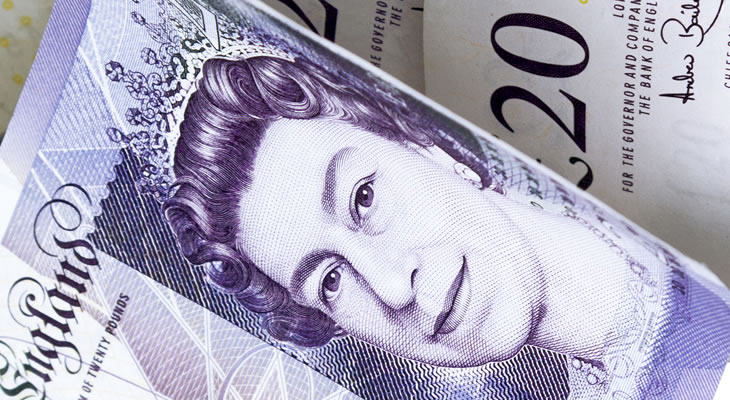GBP: Pound Sterling Climbs as Brexit Fears Ease
Pound Sterling (GBP) exchange rates rallied on Friday in the wake of what markets considered to be a reasonable ‘expat’ offer concerning the future of EU citizens currently living in the UK and vice versa. Theresa May pitched her offer to EU officials over dinner but, following debate, European Council President Donald Tusk claimed it was below expectations.
Sterling remained somewhat unperturbed by this rejection, however, as traders considered the offer to be a decent demonstration of attitudes regarding Brexit – waylaying fears that UK citizens living abroad would be required to return home once the UK leaves the EU.
Sterling continued rising steadily into the weekend.
Monday has seen the release of May’s BBA Loans for House Purchase figures, which came in lower than the previous month but still higher than expected. While this data had little impact on the Pound, the currency was supported by the news that a Conservative deal with the Democratic Unionist Party (DUP) is being reported as imminent.
Bank of England (BoE) governor Mark Carney is expected to be speaking today at the European Central Bank Forum – his attitude may pile pressure on the Pound if he stands by last week’s comments regarding leaving interest rates at record lows.
EUR: Euro Positive on German IFO Business Confidence Survey Figures
The Eurozone had some positive economic data releases on Friday. The first-quarter French GDP figure came in slightly higher at 0.5% and job creation reached its highest level in a decade. Many of June’s PMI’s for the currency bloc have slowed slightly since the previous month, but the private sector has seen some of its best growth in six years. This was seemingly not enough to placate traders though as the Euro fell heading into the weekend.
The German IFO Business Confidence Survey results were released today, coming in higher than forecast. Positive figures here bode well for the German economy, as they indicate increased Business confidence.
USD: Mixed Rate Hike Bets Leave US Dollar Bearish
The US Dollar became slightly bearish on Friday as markets awaited the evening announcements from Federal Reserve officials. The odds of another interest rate hike taking place within the year are still below 50% and Fed official James Bullard claimed that it was time to pause the cycle of interest rate hikes. Conversely other Fed official Loretta Mester claimed more hikes were needed.
Today, San Francisco Fed President John Williams took a hawkish stance with his prognostication that inflation will continue to rise, eventually reaching the US central bank’s target of 2%. He argued in favour of rate hikes:
‘Gradually raising interest rates to bring monetary policy back to normal helps us keep the economy growing at a rate that can be sustained for a longer time. (…) If we delay too long, the economy will eventually overheat, causing inflation or some other problem.’
Traders await the release of US Durable Goods Orders figures today, with a month-on-month decline in orders of -0.6% being forecast.
CAD: Weak Inflation Data Sends Canadian Dollar Tumbling
The Canadian Dollar fell against the Pound following weak domestic inflation data on Friday. The consumer price index was forecast to have increased by 0.2% in May (down from 0.4% in April), but it actually only rose by 0.1%. Year-on-year growth fell to 1.3%.
There is no big Canadian data today and the next significant moment for the week ahead will be Bank of Canada (BOC) Governor Stephen Poloz’s speech on Wednesday. It could be particularly CAD influential if Poloz supports Deputy Carolyn A. Wilkins with a hawkish attitude.
AUD: Australian Dollar Climbs on Weak US Dollar
With the US Dollar weak, the Australian Dollar was able to gain. The Australian calendar is somewhat sparse this week in terms of economic data but commodity prices are rising, which could, in turn, increase demand for the Australian Dollar. Iron ore has begun to recover after tumbling slightly recently whilst copper has jumped to a two-month high.
NZD: Sterling Holds Strong against Bearish New Zealand Dollar
Similar to the Australian Dollar, last week the New Zealand Dollar saw some gains from the weakness of the US Dollar and increasing commodity prices. However, thanks to increased trader confidence in recent Brexit negotiations, the ‘Kiwi’ remains somewhat lower against Sterling.
Today, New Zealand’s May trade balance data will be released with a forecast that shows a decrease in surplus from NZ$578 million to NZ$419 million. If this should come to fruition, Sterling may well continue to demonstrate strength against the New Zealand Dollar.


Comments are closed.